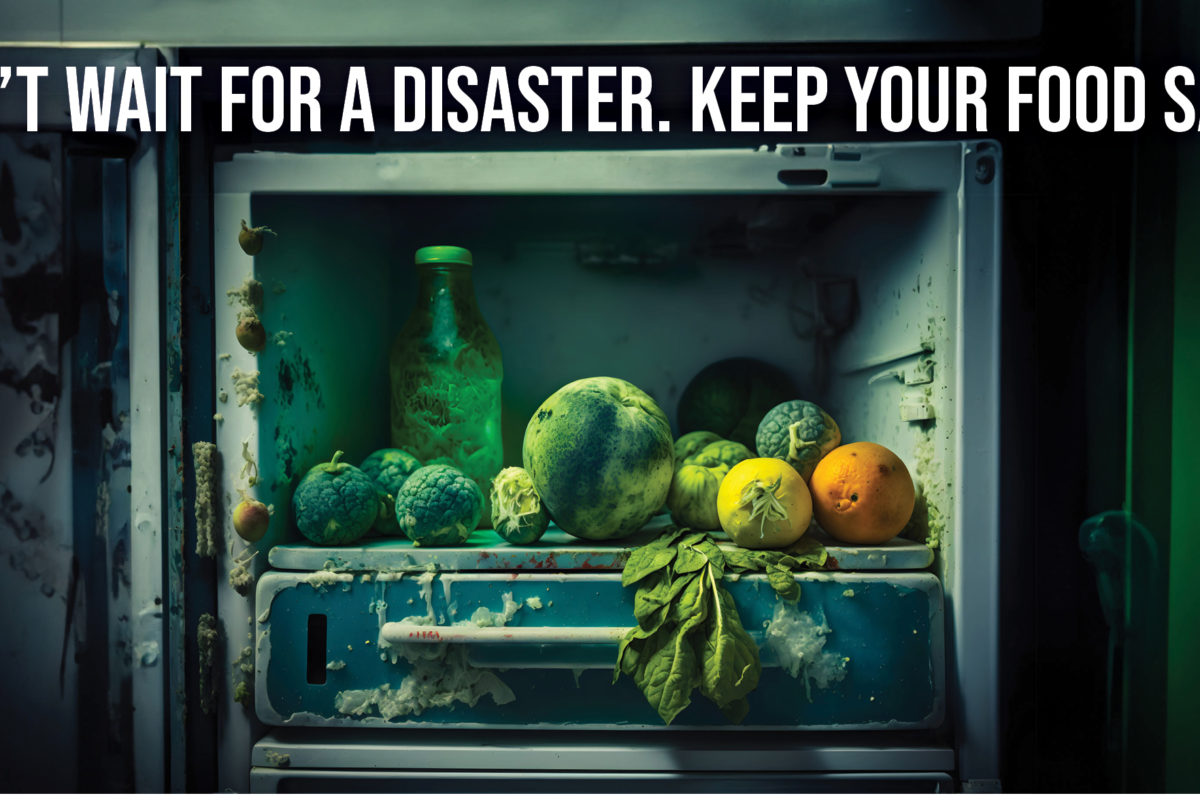Food Safety During Floods or Power Outages
By Editorial Staff
“Food safety involves everybody in the food chain.” – Mike Johanns [1]Brainy Quote. (2023). Mike Johanns quotes. https://www.brainyquote.com/authors/mike-johanns-quotes
Summer is almost over but there’s still time to gather outdoors for cookouts with friends and family, enjoying delicious food and other fun activities. All too often, though, summer rains can quickly dampen the excitement. Pop-up thunderstorms and torrential rains can quickly lead to a flooding catastrophe, especially for those living in low-lying areas or other places with a greater risk of flooding [2]Federal Emergency Management Agency. (n.d.). Flood. https://community.fema.gov/ProtectiveActions/s/article/Flood. In case of floods or power outages, make sure you and your household understand and practice food safety guidelines and procedures.
Preparation is key to keeping foods safe in the event of an emergency or power outage. Some of the steps you can take before one happens include:
- Have a cooler handy in the event you need to remove food from the fridge [3]Centers for Disease Control and Prevention. (2022, October 27). Food Safety for Power Outages. https://www.cdc.gov/foodsafety/food-safety-during-a-power-outage.html.
- Buy bags or blocks of ice to keep food cold longer in the fridge.
- Freeze containers of water or gel packs to keep food at 40°F or below.
- Make sure you keep a thermometer in the fridge and in the freezer.
- Store food that has a long storage life and requires little or no cooking, water, or refrigeration (e.g., canned food, dried fruits, peanut butter).
- Reserve at least 1 gallon of water per day for each person and keep at least a three-day supply of water for each person.
However, sudden storms or power outages are not uncommon. In the event of a power outage, make sure to do the following:
- Keep the fridge and freezer doors closed to keep the cold air inside. Most food items can last up to four hours if you avoid opening the door.
After a power outage, make sure to do the following:
- Check the temperature of foods and throw out food that is above 40°F. Cook or refreeze any food that is 40°F or lower.
- Throw away perishable food (e.g., meat, fish, dairy, and leftovers) if the power has been out for more than four hours or was in contact with flood waters. Don’t taste the food to see if it’s safe to eat. Just throw it away.
By following these food safety practices for power outages, including preparation, actions during the outage, and after power is restored, you can significantly reduce the chances of you or your loved ones developing a foodborne illness.
In addition to the guidelines above, here are further resources to help you prepare your food for an emergency.
- Food Safety for a Power Outage
- Keep Food Safe After a Disaster or Emergency
- Food Safety in a Disaster or Emergency
- Food and Water Safety During Power Outages and Floods
References:
[1] Brainy Quote. (2023). Mike Johanns quotes. https://www.brainyquote.com/authors/mike-johanns-quotes
[2] Federal Emergency Management Agency. (n.d.). Flood. https://community.fema.gov/ProtectiveActions/s/article/Flood
[3] Centers for Disease Control and Prevention. (2022, October 27). Food Safety for Power Outages. https://www.cdc.gov/foodsafety/food-safety-during-a-power-outage.html


